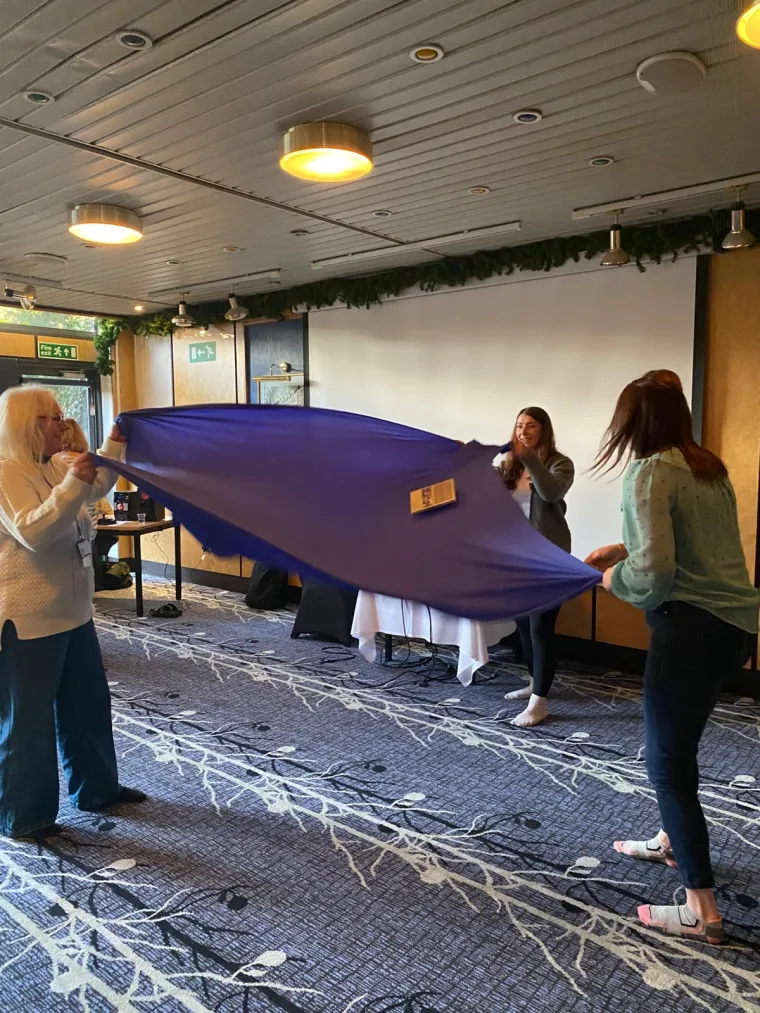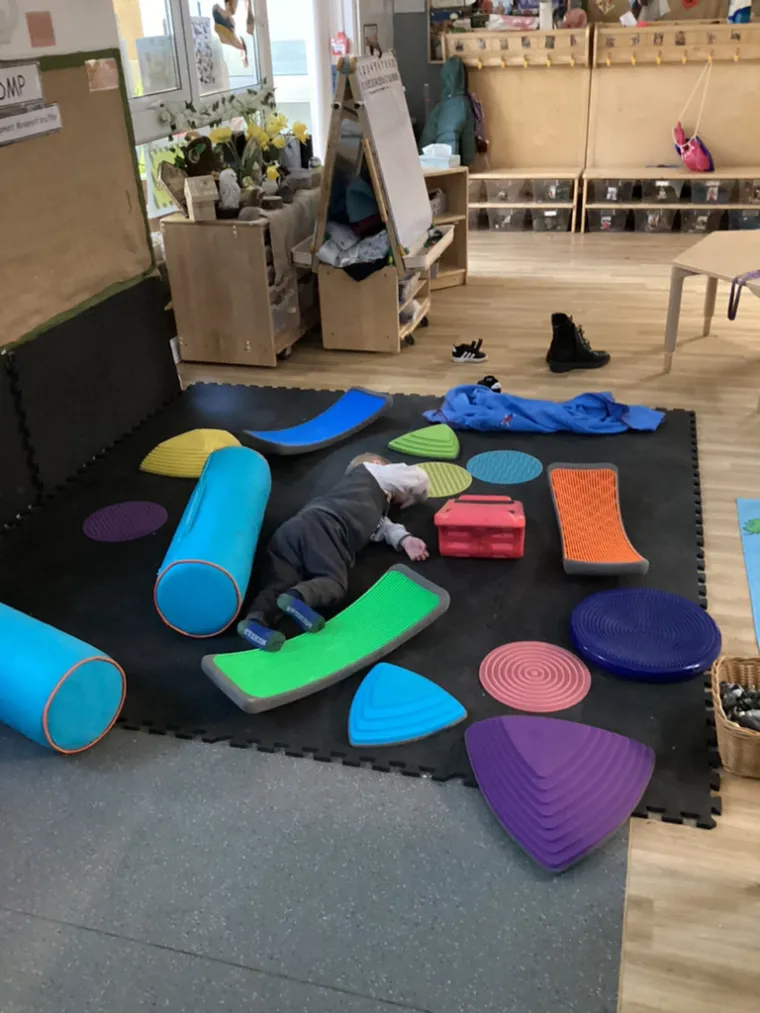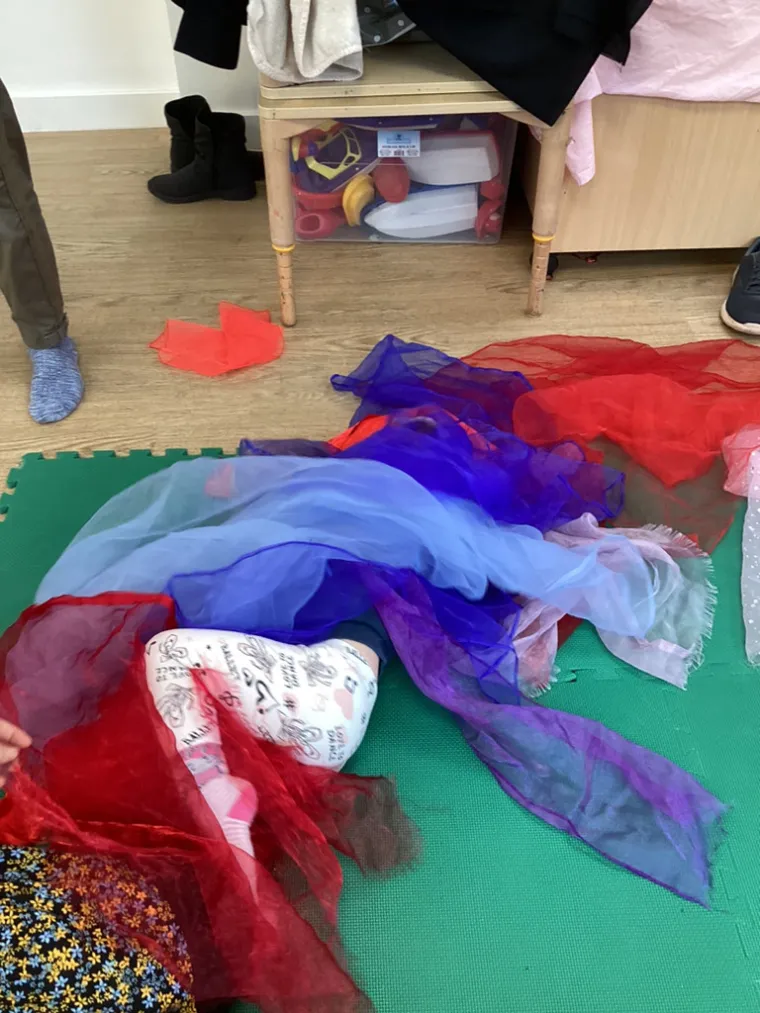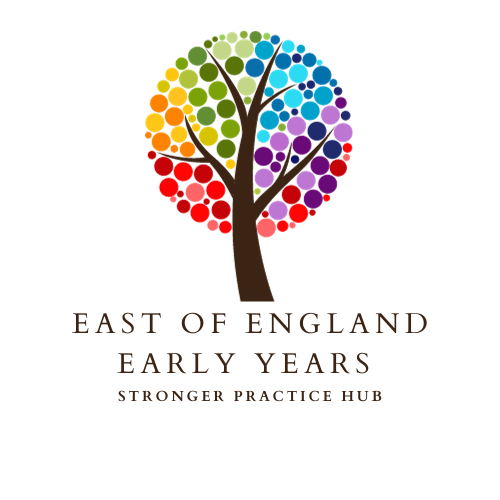This case study investigates the implementation of a movement-based intervention, Jabadao, within a large early years setting located in a deprived area of Lowestoft.
The setting provides care and education for 120 children, aged one to five years, and is staffed by a team of 22. The setting's demographic presents unique challenges, with a significant proportion of children identified as having Special Educational Needs and Disabilities (SEND) and an above-average number of children learning English as an Additional Language (EAL). Observations within the setting, particularly in the 3-5 year room, revealed a prevalence of physical behaviour amongst the children, often accompanied by difficulties in maintaining focus and regulating social-emotional responses. In response, the staff team sought to implement targeted strategies to address these challenges and promote positive developmental outcomes, aiming to create a more supportive and conducive learning environment.
Engagement:

The training provided by the East of England Stronger Practice Hub conference on the Jabadao approach offered practical, implementable ideas that could be applied immediately within the setting. ‘We sat in the training and thought, how can we get this into our setting? What can we do? What will it look like in our space?’ Furthermore, it facilitated the opportunity to experiment practically with the Jabadao approach, so those attending could see the approach in action. This training provided a comprehensive overview of Jabadao, demonstrating tangible activities that could be immediately integrated into the daily routine.
‘It was incredibly useful to see the practical demonstrations, which made it easy to understand how to implement Jabadao with our children.’
Resources that all attendees were given as a result of the training ensured that there were no financial barriers to the approach being implemented in the settings who attended.
Implementation:
The staff training day came around soon after the Jabadao training, meaning implementation could be swift and staff-wide. It was facilitated by Stella Wardrop (SENDCO) and Kirsty O’Dwyer (Supervisor of 3-5room, Deputy SENDCO), who attended the training with the East of England Stronger Practice Hub and placed a strong emphasis on the practical application of Jabadao principles within the early years setting. Furthermore, the session fostered a collaborative learning environment, encouraging all staff members to actively participate, ask questions, and develop a thorough understanding of the approach. Within the training day, the team meticulously planned their implementation, choosing a quiet morning to introduce Jabadao. This allowed for a focused introduction of the resources—mats, hoops, elastics, lycra—and a clear explanation of the rules. Staff actively modelled the activities, demonstrating how to use the resources effectively and employing a timer to support turn-taking and promote patience. To ensure efficient organisation and accessibility, a designated basket was introduced to store children’s shoes too.
In addition to the practical elements, the training aimed to equip staff with the confidence and knowledge to seamlessly integrate Jabadao into their daily practice, fostering a more engaging and developmentally enriching environment for the children.

Implementation of Jabadao began within the 3-5 year room, where staff planned and facilitated sessions to ensure children had ample opportunities for physical expression and exploration. The positive impacts observed in this room, particularly in terms of focus and social-emotional regulation, prompted the planned extension of Jabadao activities into the 1-3year room. The approach was strategically utilised to manage children's energy levels, especially before focused activities such as story time or snack, allowing for a more conducive learning environment. Throughout the implementation process, staff worked collaboratively, supporting each other in adapting the approach to meet the diverse needs of the children and ensuring consistent application across both age groups.
Impact:
- Improved focus and concentration: Children demonstrated increased focus and concentration during activities following Jabadao sessions.
- Enhanced social-emotional skills: Children showed improved social interaction, cooperation, and emotional regulation.
- Positive physical development: Children developed core muscle strength, vestibular system function, and gross motor skills.
- Reduced inappropriately physical behaviour: Children expressed themselves more fully through structured movement play, leading to a reduction in uncontrolled boisterous behaviour.
- Positive impact on children with specific needs:
- A child with significant need engaged positively with the area, showing increased social interaction and tolerance of those in her space and utilisation of resources she had previously seen as ‘just for her’.
- A child who frequently ran around the setting, used Jabadao to release energy before focused activities, resulting in improved concentration.
- Positive staff response: Staff initially had concerns about resource management and space allocation, but they quickly recognised the positive impact on children and worked collaboratively to overcome challenges.
Link to EEF Evidence:
- The EEF Early Years Evidence Store highlights the importance of physical development in early childhood, emphasising its link to cognitive and social-emotional development. Jabadao aligns with this evidence by providing structured physical activities that promote these areas.
- Self-regulation is another area that is focused on within the EEF evidence store. Jabadao has shown to improve this within the setting.
- Social and emotional development: The EEF evidence store shows that children who have good social and emotional skills, have better outcomes. Jabadao has been shown to improve this area.
- Active learning: The EEF evidence store also highlights the importance of active learning. Jabadao is a very active learning approach.
Challenges and considerations around implementation:
- Space allocation and resource management required careful planning and organisation.
- Ongoing staff training and support were essential for consistent implementation.
- Adapting activities to meet the diverse needs of children, including those with SEND and EAL, required flexibility and creativity.
- Maintaining consistency across all rooms, and staff members.

Conclusion
The implementation of Jabadao in this Lowestoft early years setting has yielded significant positive impacts on children's development, particularly in terms of focus, social-emotional skills, and physical development. The approach has been particularly beneficial for children with specific needs and has fostered a collaborative and supportive staff culture. By aligning with evidence-based practices highlighted in the EEF Early Years Evidence Store, the setting has demonstrated a commitment to promoting positive outcomes for all children.
